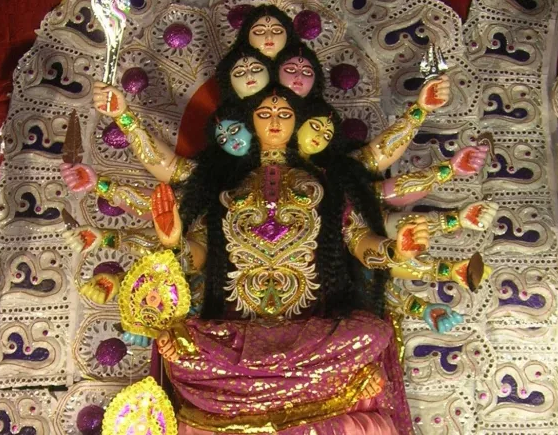(单词翻译:单击)
5.Jewish Male Menstruation
5.犹太男人的月经
A very weird element of medieval anti-Semitism was the notion that Jewish men menstruated. It can be traced back to Augustinus in the fifth century, who believed that Jewish men suffered "the women's disease." The myth was inspired as much by the notion of women as impure and diseased as it was by hatred of Jews. The supposed loss of blood through menstruation was said to drive Jewish men to seek out the blood of Christian babies to compensate. This is the origin of the blood libel myth that plagued Europe for centuries.
在中世纪的反犹太主义者们有一个很奇特的观念——犹太族的男人也会来月经!这件事情可以追溯到五世纪的奥古斯汀时代,那时候的人们相信男人也会经历所谓"女人的灾难"。由于人们对女性来月经这件事一直都不看好,再加上他们对犹太人的厌恶,犹太男人来月经这个传说就变得格外肮脏和变态。据说犹太男人会用基督教婴儿的血来补偿他们"经期失血"。这也是欧洲连续几世纪血液诽谤罪的来源。

Later thinkers revised the idea, instead believing that Jewish men suffered from monthly bouts of rectal bleeding, to the extent that suffering from hemorrhoids could be used as evidence in an Inquisition trial of someone suspected of being secretly Jewish. According to Jewish historian Yusef Yurashalmi, Juan de Quinones de Benavente composed an entire treatise in the 17th century trying to prove the idea, implying that, "Jewish males . . . are, in effect, no longer men but women, and the crime of deicide has been punished with castration."
后来研究者们更正了这一观点,比起相信犹太男人会经历月事,是否患有痔疮其实才是在宗教审判中证明一个人是不是未记录在案的犹太人的证据。犹太历史学家约瑟夫·约尔沙米和胡安·德·奇诺·德·贝纳万特在十七世纪做了一篇完整的关于这个问题的论文,在这篇文章里,他们极力证明一种观点,暗示"事实上,受到割礼惩罚的已经不是犹太男人而是犹太女人和犯罪分子了。"
4.Geh
4.吉哈

The ancient Zoroastrians associated menstruation with the evil god Ahriman. After the good god Ohrmazd, or Ahura Mazda, created the universe, Ahriman immediately attacked it, only to be knocked out for 3,000 years when Ohrmazd recited a sacred prayer. Various demons worked to bring their evil lord out of his stupor, which was finally accomplished by Geh (or Jeh or Jahi), the whore demoness, who promised to bring affliction and pestilence onto righteous men, oxen, and the entire pure world. Her words revived Ahriman, who kissed her on the forehead, and she became the first to be "polluted" by the blood of menstruation, supposedly created to make humans unable to fight against the forces of evil.
古时的琐罗亚斯德教徒曾将月经视作与恶神阿里曼相关的不洁之物。善神奥尔莫兹德(Ohrmazd,别称阿胡拉·马兹达Ahura Mazda)创世后,阿里曼闻声而动,立刻做出了破世之举,却不料奥尔莫兹德以神圣的经文作为咒语,将其捆缚了3000年。各路魔鬼相继赶来,想要唤醒这位被封印的"众魔之主"。最终,女魔头吉哈(Geh,别称Jeh、Jahi)立下诅咒:站在正义一方的人畜必将承受灾难与瘟疫的折磨,整个光明世界必将成为修罗场。她的这番恶语唤醒了阿里曼,为此,阿里曼在她额头上落下一吻,使之成为第一位被经血"污染"的生灵。据传,一旦被经血沾染,人类便会失去与邪恶对抗的力量。
Another version of the myth has Geh becoming Ahriman's chief "whore demon," meant to defile women, who will in turn defile men so they turn away from their proper work. Modern Zoroastrians consider menstrual blood to be nasu, or dead, decaying, polluting materials. Zoroastrian taboos insist upon strict separation of menstruating women: No one may approach within 1 meter (3 ft) of her, she must be handed food on metal plates, and she must avoid meat or invigorating food that may strengthen "the fiend of pollution."
在另一个版本的传说中,吉哈是阿里曼手下头号"人尽可夫的女魔头",被认为是肮脏的女人,同她接触过的男人都会被其玷污,偏离正途。现今的琐罗亚斯德教徒仍认为经血是肮脏、死亡及腐朽的介质。琐罗亚斯德教徒严格遵守"隔离经期的女性"的禁忌,即所有人都必须与来月经的女性保持1米(3步)的距离;她们的食物需用金属托盘盛放;她们不能接触肉类或新鲜的食物,因为这样会加速食物的腐烂。
3.Pliny The Elder
3.老普林尼

First-century Roman author Pliny the Elder is responsible for a great number of menstruation myths that persisted in Europe throughout the Middle Ages. In his Natural History, Pliny wrote of the destructive power of menstrual blood, which he believed could wither fruit and crops, sour wine, dull mirrors, rust iron and bronze, blunt razors, kill bees, pollute purple fabrics, drive dogs insane, drive off storms and whirlwinds, and cause miscarriage in humans and horses. Having sex with a menstruating woman during a solar or lunar eclipse, he claimed, could lead to disease or death for the male partner. Menstrual blood did have some curative properties, though, curing gout, scrofula, skin growths, erysipelas, fevers, and bites from rabid dogs. It also served as protection against dark magical arts from the East.
说起中世纪时流传于欧洲的那些关于月经的传说,恐怕大部分都是生于1世纪的罗马作家——老普林尼的杰作呢。在他撰写的《自然史》中,经血被赋予了毁灭性的力量。他认为经血会使蔬果坏死、庄稼枯萎、美酒变酸、明镜晦暗、钢铁生锈、剃刀变钝、蜜蜂死亡。经期的女性若是触碰织布,会把织布的色彩弄脏;若是抚摸犬类,会使其癫狂;若是坐船,会引来风浪;若是接触妇女和马匹,则会让孕妇和母马流产。他还声称,在日蚀或月蚀期间,男性如果与来月经的女性行房事,轻则恶病缠身,重则一命呜呼。当然,经血也有一定的医疗功效。它可以被用来治愈痛风、淋巴结核、皮肤增生、丹毒、伤风以及疯狗的咬伤。它还可以作为辟邪之物,防范来自东方的黑魔法艺术。
After his exhaustive list of menstrual blood properties, Pliny luridly claimed: "This is all it would be right for me to report and most of that I do not say without shame. That which is left is detestable and unspeakable, and so my work should hasten from the subject of man." Pliny's opinion on the whole matter can best be encapsulated by this passage: "Hardly can there be found a thing more monstrous than is that flux and course of theirs." This would all be frankly laughable if Pliny's beliefs hadn't stayed around for over a millennium before being questioned.
在详尽地列出经血的特性后,普林尼又出惊人一语:"对我而言,说出这一切是正确的,大部分我还没有说出来的部分也毫无羞耻之处。剩下的不可言喻或是令人嫌恶的内容,也正是我需要加快进度研究男性课题的原因。"普林尼的中心思想可以概括成以下一句:"再难发现比她们体内流出的经血及其成因更丑陋的事情了。"即使未被人质疑,普林尼的这一信仰也并未百世流传,真真是可笑至极。
2.Yanomami Seclusion
2.亚诺玛米式隔离

For the Yanomami people of northern Brazil, blood is a symbol of cosmic entropy. Menstruating women and killers who have ingested enemy blood are both known as unokai, which can be translated in the former case as "the state of homicide of women." Both warriors and pubescent girls are considered to have an excess of blood in their bodies and must be isolated and secluded with ritual in order to maintain safety.
对于巴西北部的亚诺玛米人来说,血液象征着宇宙中的熵。处于经期时的女性和喝下对手鲜血的杀手都被称为"乌诺卡伊",这个词指代前者即处于经期的女性时意为"女杀人犯"。他们认为战士和妙龄少女们身体内血量过多,为了保证安全,必须举行仪式来隔离他们。
On her first menstruation, a girl must inform her mother, who builds a seclusion hut using leaves from a particular shrub in order to hide the girl from the eyes of men. This is justified by an ancient legend telling of a young girl who was secluded on her first period while the community prepared a ritual feast for visiting guests. After hearing a man shouting, "Every woman without exception must sing and dance," she assumed it was meant for her and emerged from seclusion to join in. The ground immediately turned to mud, and the entire village sank into the underworld and became rocks. To prevent such an outcome, a girl on her first menstruation is subject to a number of ritual obligations: She must be naked, avoid direct contact with water by drinking with a hollow cane pushed deep into her mouth, may speak only in a whisper, and is limited to a diet of plantains and the occasional crab shell. If she does not properly complete her seclusion, it is believed that she will prematurely age and become an old woman.
女孩初次来潮时,必须告诉自己的母亲,为了女儿不被男人看见,母亲会用一种特殊的灌木叶子为她搭一个小隔离棚。这种做法来源于一个古代传说:以前,一个年轻女孩正因初潮被隔离时,部落里有宾客来访,人们都忙着为来宾筹备礼宴。这时女孩听到一个男人大叫"所有女人必须出来唱歌跳舞,没有例外",女孩以为她也必须出席,所以出了棚子跳舞去了。与此同时,大地顷刻化为泥沼,整个村子沉入地下与石头融为一体。为了防止这种情况再次发生,初次来潮的女孩必须遵循一系列的仪式条例:她必须一丝不挂;为了防止她与水源直接接触,她只能喝人们从棚外用一根空心杖送到她嘴边的水;她不能大声说话;日常三餐只能吃大蕉,偶尔加餐能吃点蟹壳。人们相信,如果她不按规矩完成隔离,她将会早衰,变成一个老太婆。
1.Kamakhya
1.迦梨女神

In Sakta Tantra, the menstrual cycle in the female body represents the changing seasons and universal order. It is particularly associated with the goddess Kamakhya, or Mother Shakti, whose Kamarupa temple is located in Gauhati, in India's Assam state. At the annual, three-day Ambubachi Mela festival in August or September, the goddess's yoni (vagina or womb) is believed to manifest itself on Earth, attracting tens of thousands of devotees every year. At the Kamarupa temple, a stone of red arsenic, said to be the yoni of the dismembered goddess Sati, flows with red water during this time. The temple is closed for three days as orthodox rituals are carried out inside. On the fourth day, the doors are opened, and devotees are allowed to receive darsan (blessing via viewing the goddess through red cloth), prasad (blessed food), and maybe a piece of red cloth from her sari, representing fecundity.
印度古籍《沙格蒂坦特罗》中认为,人们认为女性的月经周期象征着季节变更以及宇宙秩序。经期与迦梨女神有着特殊的关联,迦梨女神又被称为夏克提(性力女神),她的迦摩缕波神殿位于阿萨姆省高哈蒂。每年八月或九月会举行为期三天的迦梨女神节,女神的外阴像(阴道或是子宫)被公之于众,吸引了数以万计的信徒前来瞻仰。 迦摩缕波神殿中有一尊据传是萨提女神外阴的红信石,在女神节期间会流出红色液体。因为传统仪式在殿内进行时,所以神殿会关闭三天。在第四天,殿门大开,信徒可以沾光得福(得以透过红布见女神一面,从而得到庇护),领到布施, 或者有幸得到女神莎丽上一块象征生殖力的红布。
In tantric alchemy, the goddess's uterine blood is associated with red arsenic, and it is believed to have healing powers, particularly curing people suffering from leucodermia, as well as the ability to transmute metals into gold. Some extremist Tantrics believe that the Ambubachi festival is the best time of year to commit human sacrifices, which are generally frowned upon these days. One mystic even tried to sacrifice his 18-month-old daughter at the temple, slicing at her neck with a razor before temple officials intervened, and the man was arrested.
在密宗炼金术中,女神的子宫经血象征着雄黄,据传有治愈能力,特别是针对白斑病有奇效,还有点石成金的魔力。一些极端的坦陀罗相信迦梨女神节是一年中献祭活人的最好时刻,而对于现代人来说,这是很难以理解的举动。有一个神秘主义者奉上自己18个月大的女儿作为祭品,并试图用剃刀割她的脖子,直到被殿内工作人员发现并及时制止后将他抓捕入狱。
审校:梅子九 编辑:listen 来源:前十网


